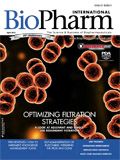A 25-Year Retrospective on GMP Training
This month, we rewind to an article titled "Good Manufacturing Practices Training."
Throughout BioPharm International's 25th anniversary year, we will be looking back at articles published in the first volume of the journal. This month, we rewind to an article titled "Good Manufacturing Practices Training" (1). Here, the original article's author, Carolyn M. Orelli, Manager, Quality Assurance, Bayer HealthCare Pharmaceuticals, provides an update to GMP training and how far it has come.
In the past 25 years, there have been many changes in GMP Training. These changes were not in the GMP training concepts themselves, but in the "c" in cGMP. It is the practical applications of training that have changed over the years. Some changes were subtle; some were more drastic (and even dramatic). But all can be summarized in three words: technology, technology, technology.
My 1988 article talked about GMP regulations, a commitment by upper management, and the need for qualified trainers. These basic requirements haven't changed. However, the use and sophistication of computers have provided opportunities to change program design, training documentation and training styles.
PROGRAM DESIGN
In 1988, training was comprised of a combination of reading SOPs (by the binder-full), hands-on demonstration (otherwise known as "passing on the tribal knowledge") for on-the-job training (OJT), and seminar-style presentations (usually for the much anticipated annual review of GMP concepts). Today, employees are still required to read the applicable SOPs, although the training curricula is now commonly managed with computer software, allowing the SOP listing to be specifically targeted and customized for individual jobs, job assignments, and for the degree of involvement and responsibility (e.g., "read and understood" versus interactive module). Operators are still required to learn and demonstrate competence with job-related techniques, whether that means assembling equipment, running an assay for quality control, or reviewing documentation for quality assurance.

But today, in 2012, another form of training is frequently used for both on-the-job and GMP regulations training: computer based training (CBT), or training using a "wiki" database. Essentially, a file is prepared with training materials, either within the pharmaceutical company, adapted by an outside vendor, or purchased off the shelf. Employees review the training materials online and then answer questions embedded in the file to demonstrate competency with the material.
TRAINING DOCUMENTATION
In 1988, all training was documented, but typically based on a paper system, such as an attendee sign in sheet, or a trainer/training record sheet. This sheet was duplicated and filed in one or more folders, as applicable. Retrieving the specific page, for a performance review by a supervisor, or at the request of an auditor or regulatory agency, was frequently a challenge. But with the introduction of Learning Management Systems (LMS) software, training documentation has also reached the computer age of data storage, with the power to retrieve as needed. In fact, some biopharmaceutical companies are using the second or even third generation of validated LMS software.
LEARNING STYLES
In 1988, most training programs, including GMP programs, were in their infancy and frequently used a one-size-fits-all approach. Some trainers tailored their approaches by targeting the audience, usually by department. For example, GMP training for R&D personnel might include scientific reasons behind the regulations, while training for maintenance personnel might include a "what's in it for our operations as long as we are required to comply with the regulations" approach. Over the years, training concepts and training departments have become more sophisticated and knowledgeable, including awareness of differences in learning styles (i.e., visual, auditory, and kinesthetic) when designing training?materials. Now, an experienced trainer expects to include aspects of all three learning styles, and also address the learning preferences of all ages of employees (e.g., Millennium, GenXer, Boomer). This is an added requirement for training design, but facilitates comprehension of the material.
SUMMARY
cGMP learning has changed in 25 years. Is it more challenging for the trainer? Yes, but it's also become more interesting for both the trainer and the trainee. Is the training program more sophisticated? Yes. Is the training program more comprehensive? Usually. Is the documentation more readily retrievable? Yes. Do all these differences make GMP training more effective, and more current? Certainly.
REFERENCE
1. C.M. Orelli, "Good Manufacturing Practices Training,"
BioPharm International
1 (4), 38–40 (1988).

MHRA Approves GSK Therapy Combinations for Multiple Myeloma
April 21st 2025Belantamab mafodotin is approved in combination with bortezomib plus dexamethasone in patients who have had at least one prior therapy, and in combination with pomalidomide plus dexamethasone for those who have had a prior therapy including lenalidomide.